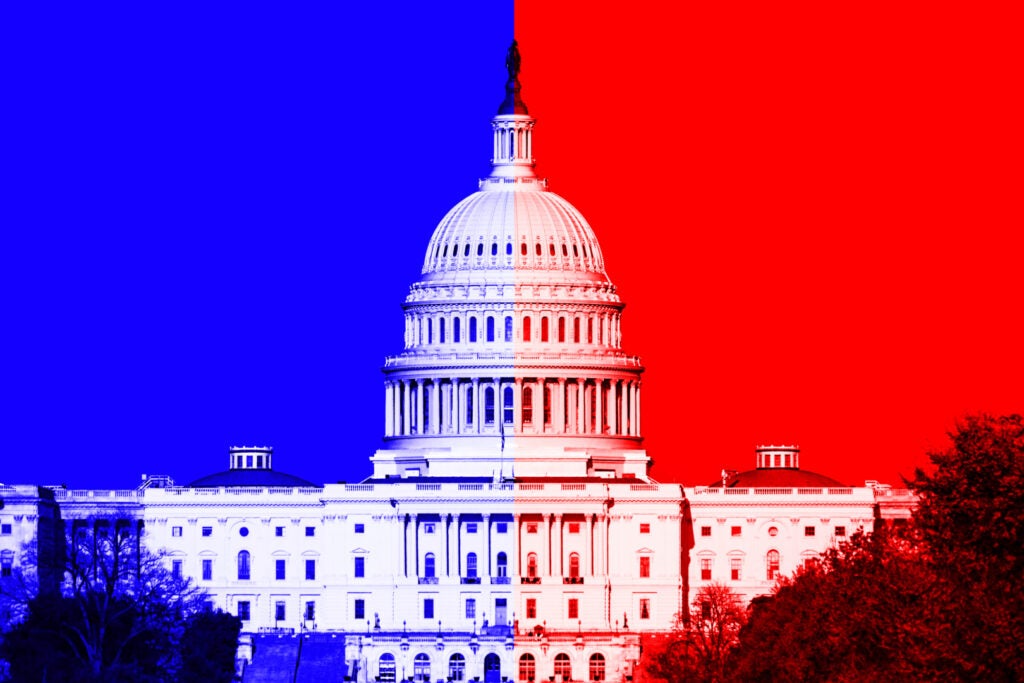President-elect Donald Trump unexpectedly dismissed a bipartisan proposal on Wednesday, increasing the possibility of a U.S. government ahead of Christmas.
However, according to research firm Edward Jones, markets tend to look through the noise, with U.S. stocks staying positive half the times during the past 20 government shutdowns since 1976.
What Happened: “The uncertainty that a potential government shutdown introduces can lead to a short-term uptick in volatility. But as with most political events, government shutdowns have historically had little lasting impact on equity performance,” said Angelo Kourkafas, an investment strategist at Edward Jones.
Recent years have witnessed recurring government shutdowns, though they have been relatively short-lived. Since 1976, the U.S. has experienced 20 such shutdowns lasting at least a day. The most prolonged shutdown, occurring in December 2018, lasted for 35 days, setting a historical record.
The following table shows how the markets have reacted to the previous shutdowns. According to this data, the stocks were positive half the time during the government closures and were higher in most cases three and six months later.
Market Performance Over Last 20 Shutdowns Since 1976
| Start Date | Duration in days | During Shutdown | Three Months Later | Six Months Later |
| 9/30/1976 | 11 | -3% | 2% | -4% |
| 9/30/1977 | 13 | -3% | -5% | -3% |
| 10/31/1977 | 9 | 1% | -2% | 4% |
| 11/30/1977 | 9 | -1% | -5% | 7% |
| 9/30/1978 | 18 | -2% | -2% | 0% |
| 9/30/1979 | 12 | -4% | 5% | -1% |
| 11/20/1981 | 3 | 0% | -8% | -6% |
| 9/30/1982 | 2 | 1% | 15% | 25% |
| 12/17/1982 | 4 | 1% | 11% | 25% |
| 11/10/1983 | 4 | 1% | -6% | -5% |
| 9/30/1984 | 3 | -2% | 1% | 9% |
| 10/3/1984 | 2 | 0% | 0% | 10% |
| 10/16/1986 | 2 | 0% | 11% | 20% |
| 12/18/1987 | 2 | 0% | 9% | 8% |
| 10/5/1990 | 4 | -2% | -1% | 19% |
| 11/13/1995 | 6 | 1% | 8% | 11% |
| 12/15/1995 | 22 | 0% | 6% | 7% |
| 9/30/2013 | 17 | 3% | 7% | 8% |
| 1/19/2018 | 3 | 1% | -5% | 0% |
| 12/21/2018 | 35 | 10% | 11% | 14% |
“More broadly, market performance tends to be driven more by the outlook for economic growth, earnings and interest rather than the political landscape,” added Kourkafas.
Why It Matters: The impact of a shutdown could be different on various kinds of government functions. It differs from a debt-limit default in that it doesn’t hinder the government’s capacity to meet its debt obligations to bondholders, meaning it doesn’t directly influence borrowing costs or credit ratings.
While Treasury interest payments and Social Security benefits continue as usual, millions of federal workers go without pay during the shutdown. Although this situation affects households, furloughed employees will receive backpay once Congress restores funding.
What’s Happening With The Bill? After scrapping the bipartisan proposal, Trump urged House Speaker Mike Johnson and Republican lawmakers to renegotiate, just days before federal funding was set to expire.
Speaker Johnson has to now come up with an alternative plan to prevent the government from closing ahead of Friday's deadline.
In a statement, Trump and Vice President-elect JD Vance urged Republicans to "get smart and tough."
Trump's proposal, which was seen as highly ambitious, called for continued government funding alongside a contentious provision to raise the national debt ceiling—something that typically faces strong opposition from his own party. "Anything else is a betrayal of our country," they declared.
Department of Government Efficiency co-lead Elon Musk, on the other hand, also supported the Republicans in turning down the bill.
Read Next:
Photo courtesy: Shutterstock
© 2024 Benzinga.com. Benzinga does not provide investment advice. All rights reserved.








